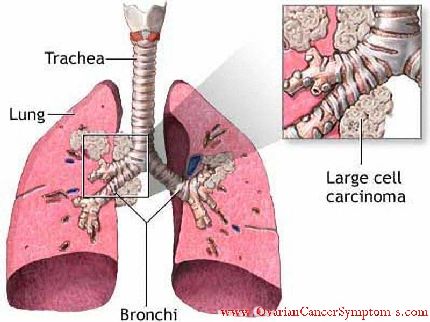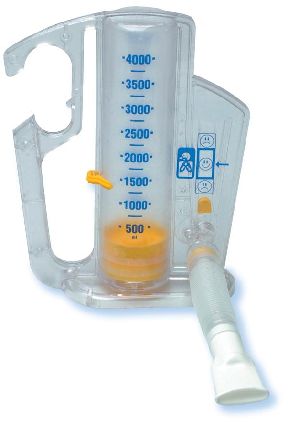What are the symptoms of pneumonia? Pneumococcal pneumonia may begin suddenly with severe chills sotryasayuschyy usually accompanied >> << otherwise healthy adult, pneumococcal pneumonia usually involves one or more parts of the lungs, known as particles. Thus, it is sometimes called lobar pneumonia. The rest of the respiratory system compared to no effect. Unlike infants, young children and older people often develop very mild infection in other parts of the lungs, such as around aircraft (bronchi) causing bronchopneumonia. What is pneumonia? Pneumonia is a lung disease that can be caused by different viruses, bacteria and sometimes fungi. U.S. Centers for Disease Control and Prevention Diseases (CDC) estimate nearly 90,000 people in the United States died from one of several kinds of pneumonia in 1999. In the United States, pneumonia is the fifth in importance cause of death [Natl Vital Stat Report 47 (25), 05/10/1999]. The rate of infection three times higher in African Americans than in whites and 5 - 10 times higher in own-American adults and 10 times higher than in own-American children [
J infect Dis, 170:368 76, 1994] . On an international scale, acute respiratory infection ranks as the third most common cause of death among children under 5 years and was responsible for about 3. 5000000 people in 1998. What is pneumococcal pneumonia? Pneumococcal pneumonia infection in the lungs caused by the bacterium Streptococcus pneumonia. S.pneumoniae, also called pneumococcus, can infect the upper respiratory tract infections in adults and children and can spread to the blood, lungs, middle ear, or nervous system. According to the CDC
S. pneumonia caused the death of 40,000 and 500,000 cases of pneumonia annually in the United States. Annual incidence of pneumococcal pneumonia is twice as high in African Americans than in whites and is responsible for 3000 cases of meningitis (inflammation of the spinal cord membranes), 50,000 cases of bacteremia (bacteria in blood), and 7,000,000 cases of otitis media (inner ear infection) [
JAMA, 285:1729-1735, 2001]. According to the World Health Organization, p
pneumonia is the leading cause of severe pneumonia worldwide in children younger than 5 years, resulting in more than 1 million deaths of children per year [pneumococcal vaccine: WHO Position Paper: Wkly Epidemiol Rec, 74 is 177-183, 1999]. Pneumococcal pneumonia primarily causes illness in children younger than 2 years and adults aged 65 and older. Older people are particularly vulnerable to getting seriously ill and dying from this disease. Also, people with certain diseases such as chronic heart, lung, liver or disease or sickle cell anemia are also at increased risk of pneumococcal pneumonia for how people with HIV or AIDS, or people who have had organ transplants and take medicines that lower their resistance to infection. How pneumococcus distribution? Nose and throat to 70 percent of healthy people contain pneumococcus at any given time. It is transmitted from person to person through coughing, sneezing or close contact. Scientists do not know why it suddenly invades the lungs and blood to cause disease. How pneumococcal pneumonia diagnosed? Because the number of bacteria, viruses and other infectious agents can cause pneumonia if you have symptoms, you should get early diagnosis and start taking necessary medication, if you have symptoms. Availability
S. pneumonia in the blood, saliva or lung fluid helps lead to the diagnosis of pneumococcal pneumonia. How Pneumococcal pneumonia treated? Medical professionals usually prescribe antibiotics such as penicillin, to treat the viral disease. The symptoms of pneumococcal pneumonia usually disappear within 12 to 36 hours after starting treatment. Bacteria such as
S.pneumoniae, however, resistance and struggle against the forces of antibiotics to destroy them. Such resistance to antibiotics is increasing worldwide because these medicines are abused or incorrectly. So if you are at risk of getting pneumococcal pneumonia, you should talk with your doctor about taking measures to prevent it. Can pneumococcal pneumonia can be prevented? Pneumococcal vaccine is the only way to prevent getting pneumococcal pneumonia. Vaccines for children and adults. CDC National Immunization Program (NIP) recommends vaccination against pneumococcal begin pneumonia if you are in one of these groups. You are 65 strattera price and older. Do you have a serious long term health problems such as heart disease, sickle cell anemia, alcoholism, leaks of cerebrospinal fluid, lung disease (excluding asthma), diabetes, or cirrhosis. Your resistance to infection is reduced by HIV infection or AIDS, lymphoma, leukemia and other cancers, cancer treatment with X-rays or drugs, long-term treatment with steroids, bone marrow or organ transplant, renal failure, nephrotic (kidney) syndrome, damage spleen or no spleen. You Alaska-Native or from certain Native American populations. In February 2000 the U.S. Food and Drug Administration approved a pneumococcal vaccine for use in infants and children. This is the first pneumococcal vaccine approved for children younger than 2 years
Oschad Annual Report 2000 fiscal year released :01-08-01 Added: 03-15-01, Updated: 1/10/04]. NIP recommends that all children aged 2 to 23 months to get this vaccine. Does Pneumococcal pneumonia complications cause? According to the CDC, in 25 to 30 percent of people with pneumococcal pneumonia, the bacteria penetrate the blood from the lungs. This leads to bacteremia, a serious condition. Pneumococcal pneumonia can also cause other problems easy and some heart problems. What research is going on? National Institute of Allergy and Infectious Diseases (NIAID) supports research on more effective prevention and treatment approaches to combat pneumonia and its causes. These include

recently approved pneumococcal conjugated vaccine for children is partly the result of the most important NIAID research in the early development of vaccines. This vaccine helps prevent pneumococcal disease in infants and toddlers is the latest achievement in the development of vaccines against common bacterial infections. This work was led largely NIAID over 30 years. NIAID supports research to develop improved conjugated pneumococcal vaccines for children worldwide. In one such study, NIAID researchers are working with the Government of the Gambia and scientists from several international research institutions to test pneumococcal conjugated vaccine in the Gambia, West Africa. Health experts consistently identified pneumococcus as the most common cause of bacterial pneumonia in the Gambia. In the pattern typical of many regions, infant and child mortality in the Gambia are high, acute respiratory infections are the leading cause of death, and pneumococcus is the most common cause of these infections. Where can I get more information about pneumococcal pneumonia and Pneumococcal vaccine? National Institute of Allergy and Infectious Diseases 31 Center Drive, MSC 2520
Bethesda, MD 20892-2520
U.S. National Library of Medicine
Bethesda, MD 20894
United States Food and Drug Administration
American Lung Association of New York, NY 10019
National Foundation of Infectious Diseases 4733 Bethesda Avenue, Suite 750
Bethesda, MD 20814-5228
U.S. Centers for Disease Control and Prevention U.S.
National Institutes of Health
NIAID is a component of the National Institutes of Health (NIH), which is the body of the Ministry of Health and Human Services. NIAID supports basic and applied research to prevent, diagnose and treat infectious and immune system diseases, including HIV / AIDS and other sexually transmitted diseases, illness from potential agents of bioterrorism, tuberculosis, malaria, autoimmune disorders, asthma and allergies. Bethesda, MD 20892.




